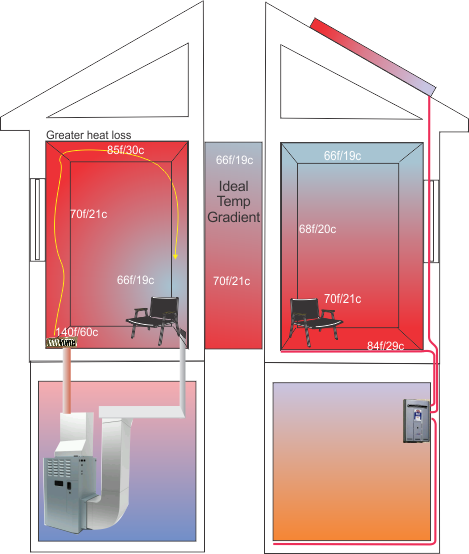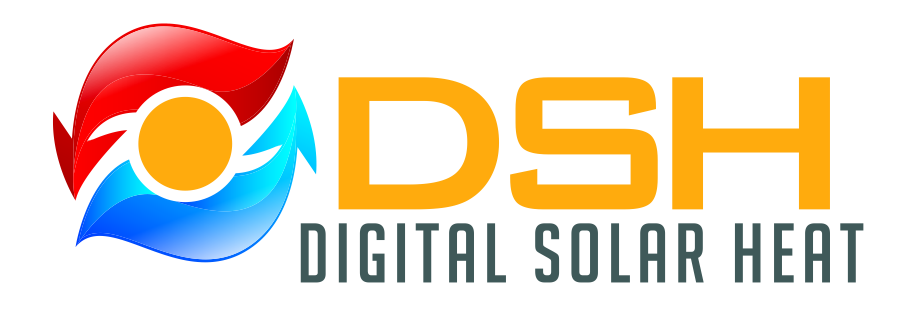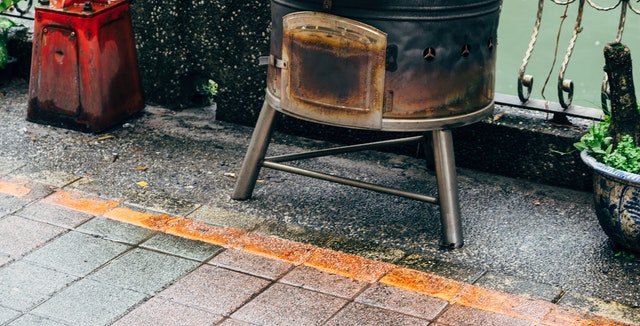About Digital Solar Heat
Brief History
Beginning in 2003, while designing energy efficient homes, it was realized that it was possible to heat a home, office or commercial buildings using solar heat.
In 2005, after overcoming many design challenges, installations began. In 2010 design work began on a cold weather, version targeted at Canadian winters.
The Challenge
If enough solar panels were engineered to offset significant thermal losses in winter, then summer solar energy would tend to over-generate thermal energy. Normally this heat energy would be vented. However, storing and reusing the heat later made real economic sense. This solution required a mass-storage strategy. Patented 2010, 2016
Inter-Seasonal Storage
What was required was a huge yet low cost way of storing the surplus heat energy for use later. To store this amount of heat energy typically requires an large area. A system was devised whereby heat could be stored in an insulated area beneath the building. This energy can then be extracted on demand, and used during dark. times.
Storing Summer Heat for use in Winter = Inter-seasonal Storage

Massive reductions in Operating Costs & GHG emmissions
Residences ~ Commercial ~ Industrial Pre-process
Limits & Requirements
- The shell of the building must be thermally efficient to reduce thermal losses for the location.
- There must be enough area (roof planes or other) for the solar thermal panels.
- Solar array must be oriented in the direction of the sun with minimum shadows.
- Location must have reasonable solar isolation.
- In many countries such as Canada, an approved backup heat source is required by code.
- The preferred method of heating is by way of slab heat, insulated on the bottom.
As Seen On TV
A custom version of the DSH system was featured in Consumers Magazine, as well as on the international TV program: Grand Designs Australia Episode 6 Season 4. The featured home went on to win 13 National & International awards and sold for almost AU$2M. The complete TV show is very interesting and worth watching.
Chris, the owner/builder: An innovative underground heating solution began the journey of this unique build. “A subterranean heat storage system located underneath the house is heated by the roof-top solar tube collectors, releasing heat on demand to the entire house,” € Chris explains. “There are two independent solar tube collectors. One heats domestic hot water with a solar and electric boost until it reaches 65°C, then it switches back and heats either the ground-floor concrete slab or the heat core. The second collector is set to always heat the ground-floor slab if it hasn’t reached the set temperature. The best part about the system is that it stores heat all year round for use when required.€”
Click here for the CAD graphics TV program extraction

BENEFITS OF HYDRONIC HEATING
Liveability:
Size:
Design Flexibility:
Noise:
Draft free:
Clean:
Non-invasive:

Uses For Solar Thermal

Residential Solutions
Commercial and Educational Solutions
Industrial applications
Agricultural Applications
Governmental
Member:


DSH Hydronic heating is quiet, and heat tends to stratify in the key areas you occupy. In addition you are able to claw back space required for furnaces and ducts.
Corporate Office Locations
Calgary, Alberta, Canada
Langley, British Columbia, Canada
Wellington, NZ
Phone
(587) 351 6020
info@digitalsolarheat.com


